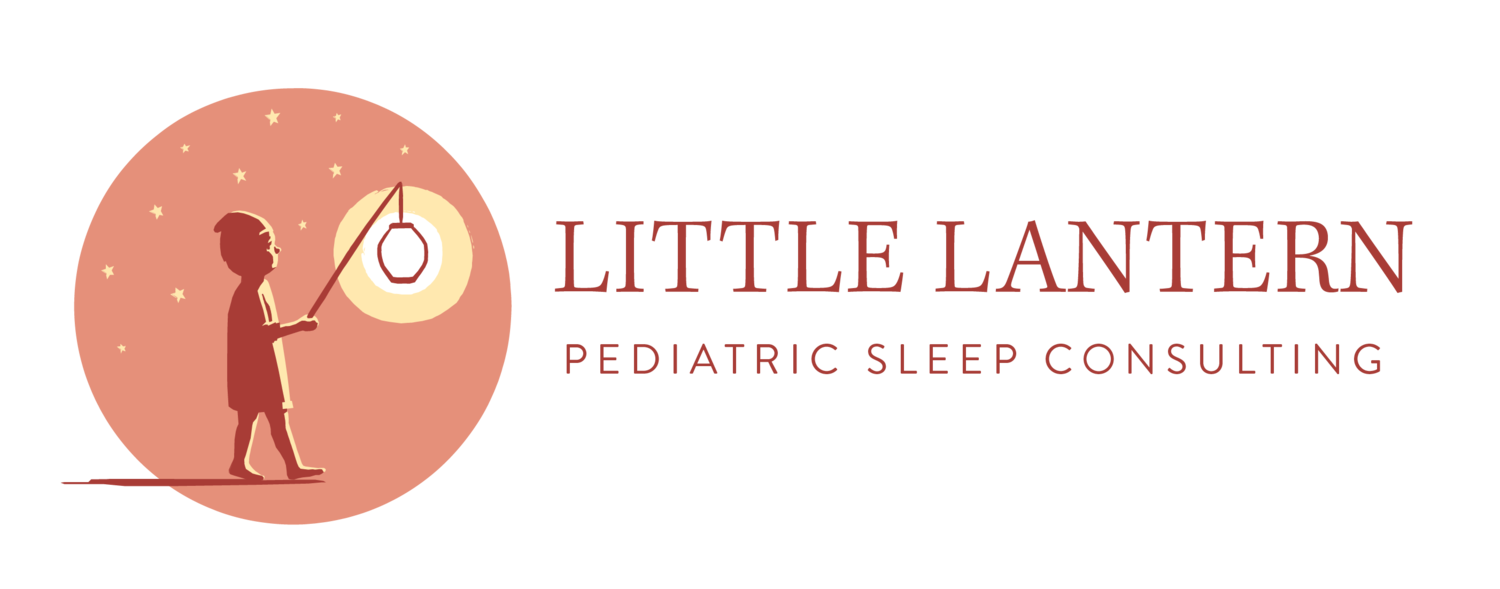Debunking the Bedtime Myth
A common misunderstanding about childrens’ bedtime is that it should be at the same time every evening -- for example, always 7pm. Yes, when day sleep is adequate, bedtime will often fall around the same time each day. However, when naps are mistimed, absent, or short, a flexible bedtime becomes a useful tool.
Keep your early bedtime flexible according to the quality of naps. Aim for your child to be asleep sometime between 6 pm to 8 pm. If your child had a mistimed, short, or absent nap, you can put your child down before 6 pm, around 5 pm or 5:30 pm. A 5 pm bedtime will help get your child’s sleep back on track.
Why do flexible bedtimes matter? Flexible bedtimes prevent night wakings and early wake-ups. Sleep in the first part of the night is more restorative than sleep in the second part of the night. From around 4 months of age on, children have, more restorative, Non-REM sleep in the first part of the night. When you adjust your child’s bedtime earlier, they receive more of this deeper, restorative sleep which prevents overtiredness and eliminates sleep debt. Once children are overtired, their brains release hormones, like cortisol, which keep them awake. Once these hormones are released, they interfere with the body's process of falling asleep and remain in the body while sleeping. Then, it’s not only hard to fall asleep, it’s hard to stay asleep. If this happens on a regular basis, it results in chronic sleep debt-- the accumulation of sleep debt from insufficient sleep over an extended period of time. Children with chronic sleep debt experience crankiness and irritability and have a challenging time falling asleep and staying asleep. An early bedtime is our best tool in breaking the cycle of sleep debt.
Won’t a 5 pm bedtime make my child wake up earlier in the morning? No. If it is timed right, your child will typically sleep until their normal wake-up time. They will wake up refreshed and ready to play. This is because sufficient sleep in the first part of the night aides consolidated and longer sleep in the second part of the night. It is not logical, it is biological! It may be helpful to think of it in terms of your own sleep. For example, if you’re someone who usually goes to bed around 10 pm, on days you feel tired, you may choose to go to bed at 8 pm or 9 pm. Typically, you wouldn’t wake up at 4 am as a result. This is the same for a child whose bedtime is adjusted from 7 pm to around 5 pm or 6 pm after a day of poor naps or no naps.
Don’t you sleep later into the morning if you go to bed later? Later bedtimes result in worse sleep for adults, too. On days we go to bed late and sleep in, we often don’t feel as restored as when we go to bed earlier. Although some adults are naturally more night owls and others early birds, all children are early birds. Children are biologically primed for sleep earlier in the evening, and they naturally wake up earlier than adults. Often, they will wake around the same time no matter what time they go to bed! An ideal wake-up time is between 6 am to 7 am for children taking 2 or 3 naps, and between 6 am to 8 am for children on a midday nap schedule.
How do I know if I am putting my child down at the right time? The best metric of knowing whether or not you are putting your child down at the right time is your child’s demeanor and behavior. If your child is fussy or irritable at wake-up (in the morning or after naps), it is a sign that the sleep was not restorative. If your child is fussy every time they wake up, there is a good chance they are experiencing chronic sleep debt. Another sign of chronic sleep debt is a child’s consistent resistance to naps and bedtime. Other signs of a mistimed bedtime include night wakings and early risings without any other apparent cause.
How do I put my child down at the right time? When we miss the window in which children are primed for sleep, children become fussy and irritable. Put your child down for rest at the first signs of fatigue before they become fussy. Often the best time for bed is when children are still playing happily but show subtle sleepy signs. With practice, you’ll begin to read the cues and intuit the timing when your child is primed for sleep. It is a moving target, and we may not get it perfectly every time. It can be helpful to develop a child observation practice and chart your child’s naps and night sleep to help discover patterns. The first signs of fatigue can be subtle and are expressed differently for infants, toddlers, and children. Stay tuned for my next blog article about sleepy cues in infants, toddlers, and children!
Margit Foster
November 2020
